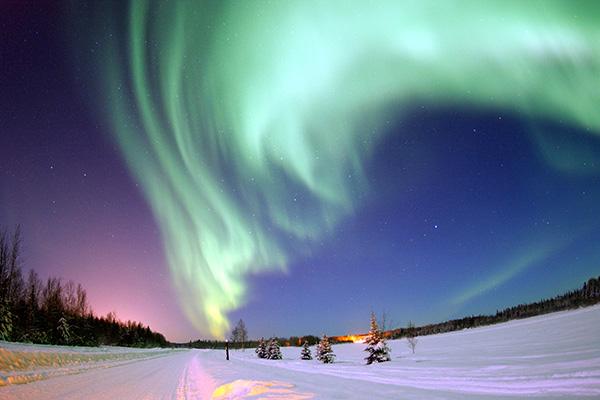Ohio SkyLites - December 2022

What’s Up? Constellations, Planets, and Astronomical Events Visible in December 2022
-Written and Compiled by Alyssa Whalen
The days grow shorter and colder as we enter December, but that just means we have more nighttime to go out and observe! The winter solstice occurs on December 21st this year. The winter solstice is the astronomical start of the winter season and the shortest day of the year (for the northern hemisphere). This year, the sun will rise on December 21st at 7:51 am and set that evening at 5:09 pm, resulting in 9 hours and 18 minutes of daylight on the winter solstice. From that point on, the days will grow gradually longer until the summer solstice next year.
This month’s full moon occurs on December 8th. Native Americans called this moon the Cold moon as this time of year is when the cold weather comes in force. The new moon will occur near the solstice on December 23rd. This new moon provides wonderful observing conditions (weather permitting) for stargazing during the winter holidays and the meteor shower occurring later in the month.
In fact, there are two meteor showers occurring this month. The Geminids are the crown jewels of meteor showers, occurring annually from December 7-17. This meteor shower peaks December 13th and 14th with an incredible 120 meteors per hour! The nearly third-quarter moon will make the faintest meteors difficult to see, but the high rate will surely put on a show regardless. This meteor shower will radiate from the constellation Gemini, so the best viewing will be close to 10 pm when Gemini is on the eastern horizon and the moon is still below the horizon. The second meteor shower is the Ursids, which runs annually from December 17-25. This year, it peaks the night of the winter solstice on December 21st, producing 5-10 meteors per hour. The meteors will originate from the constellation Ursa Minor. The nearly new moon will aid in the viewing, but light pollution from cities could make the shower difficult to enjoy.
Mars is in opposition this month. On the night of December 8th, the red planet will shine brightly from sundown to sun up. Opposition means Mars will be on the exact opposite side of Earth than the sun, so it will be fully illuminated and above the horizon all night. This will be the best time to view mars with and without a telescope, although a telescope will still be needed to view the Martian surface. This month also provides an opportunity to view Mercury at its greatest eastern elongation on December 21st. Greatest elongation is when a planet interior to Earth (either Mercury or Venus) is at its apparent furthest distance from the Sun. This allows decent visibility either right before sunrise (during western elongation) or right after sunset (during eastern elongation). The Sun typically makes viewing interior planets difficult, but viewing at maximum elongation provides the best conditions. Eastern elongation means Mercury will be visible for nearly an hour in the western sky after the sun has set.
Venus is close to the Sun most of the month but will be visible in the evening sky close to the horizon right after sunset. It will become easier to observe later in the month, but it will remain difficult to observe. Jupiter is visible for approximately half the night, as it sets at 1 am; however, it will still be easily observed with the naked eye. Saturn continues to rise earlier and earlier, soon it will be below the horizon during the night. For this month, it rises in the late morning and sets around 9 pm. Neptune is near Jupiter for much of the month, setting near midnight; however, its distance makes observing even with a telescope difficult. Uranus is up for most of the night, setting near 4:30 am this month.
The winter season officially starts this month! Therefore, it's time to highlight the most popular winter constellation: Orion (and Taurus). The full constellation of Orion will be above the horizon around 7:30 pm, but it will be best observed after 9 pm when it is higher in the sky. The constellation Orion is most recognized by the 3 stars that make up his belt, and by the bright red star that burns on his shoulder: Betelgeuse. To find the constellation Taurus, follow Orion’s belt westward in the sky until you find the bright star Aldebaran. This star is the bull’s forehead. Drawing a line between Aldebaran and the constellation Gemini (found by the twin bright stars Castor and Pollux slightly north of Orion) will highlight the easternmost horn of the bull. While Orion is an iconic constellation, the Hunter and the Bull are also home to many celestial objects. The most notable are the Pleiades, and the Hyades, two star clusters located within Taurus, as well as M42: the Orion Nebula which is located just under Orion’s belt. This nebula is one of the brightest in our sky, and it can be seen with the naked eye if the sky is dark enough. There are many other objects of note within these two constellations: NGC 1662, Messier 78, and NGC 1647 to name a few. So get out your telescopes and see what you can find!
Happy Observing!
Sources:
- http://www.seasky.org/astronomy/astronomy-calendar-2022.html
- https://www.timeanddate.com/astronomy/night/@5165418
- https://stellarium-web.org/
Image Credits:
- Orbit Diagram: https://www.weather.gov/cle/Seasons
- Geminids Shower: https://wtop.com/the-space-place/2020/12/geminid-meteor-shower-what-to-know-for-dec-13-14/
- Ursids Shower: https://skyandtelescope.org/astronomy-news/spot-decembers-ursid-meteors/
- Orion/Taurus: https://messengermountainnews.com/taurus-the-bull-and-the-pleiades-seven-sisters/
